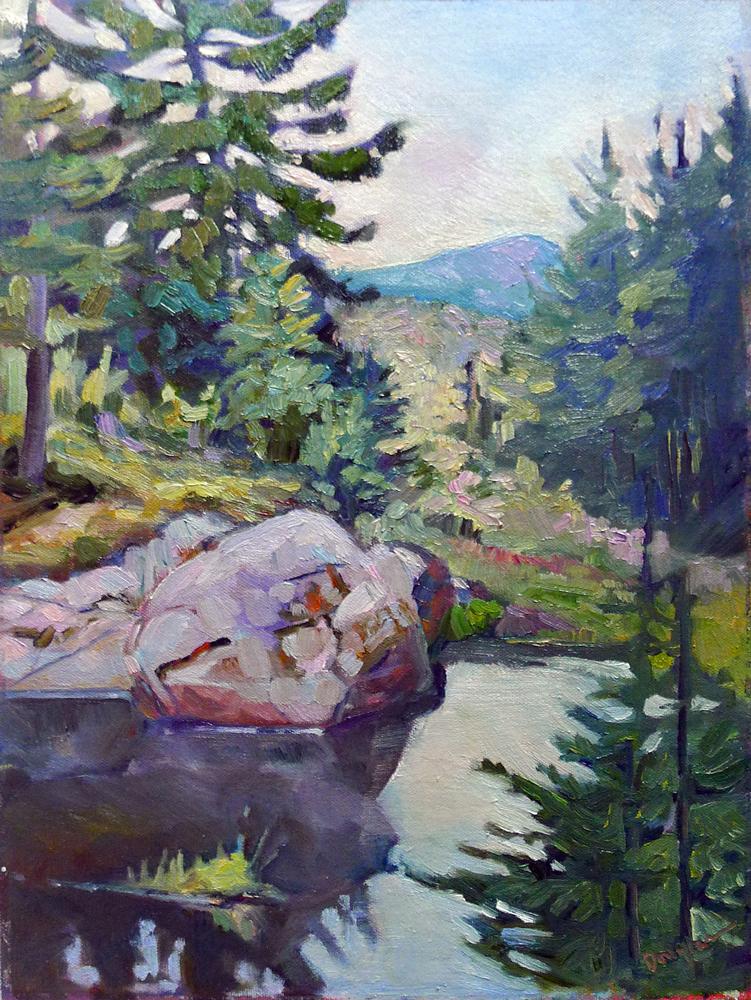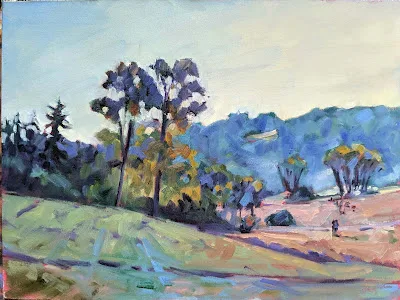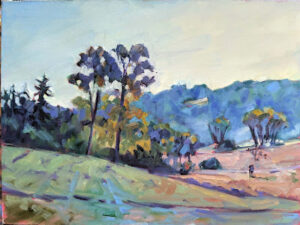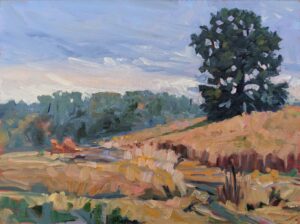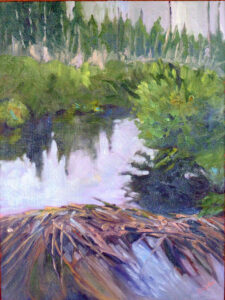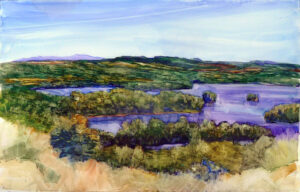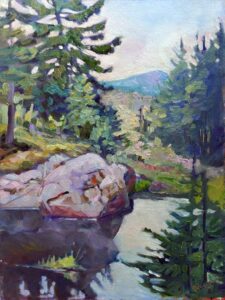
I drove from Paul Smiths to Saranac Lake, NY, in a morose mood. Here is the gulch where Kari Ganoung Ruiz parked and painted; here is the cemetery where Laura Martinez-Bianco and Crista Pisano clowned around; if Chrissy Pahucki were in town, we could go to Donnelly’s for ice cream. I was on my way to a meet-and-greet for Saranac Lake ArtWorks’ 14th annual Adirondacks Plein Air Festival at the Hotel Saranac. I’m don’t enjoy large parties; feeling sorry for myself wasn’t helping.
That was absurd, of course. I ran into Kathleen Gray Farthing, Patrick McPhee and Tarryl Gabel as soon as I walked in. Lisa BurgerLenz and I reminisced about contracting giardiasis together back in the bad old days; there’s nothing like diarrhea to bond friends for life.
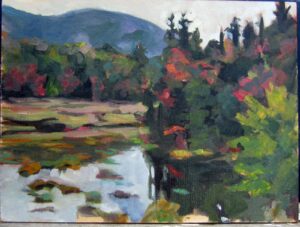
I’ve promised organizer Sandra Hildreth that I can remain objective in the jurying, and I’m fairly certain I can do that with personalities. With artistic style, it will be more difficult. We all fit somewhere on the continuum between abstraction and realism. We tend to respond to paintings with a similar outlook. I must look past my stylistic prejudices to see more universal qualities. This is where a rubric for formal criticism is helpful.
As much as I stress design and execution, there ought to be something in painting that transcends mere technique. We may have said otherwise in the crazy days of the twentieth century, but a painting really ought to mean something. Otherwise, it’s no more important than a square of designer fabric.
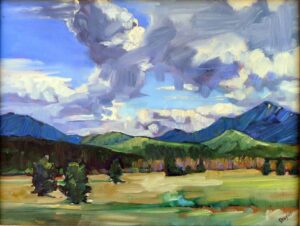
I’m intimately familiar with the Adirondack Preserve. I know its history, the terrain, and the people who live and work here. I am grounded in the spirit of the place. That makes it easy to assess these painters’ core message. But what if I were jurying in, say, Florida, where I have no affinities? I’d be thinking in stereotypes, which raises the risk of missing deeper insights altogether.
That’s the conundrum for event organizers. They want jurors from away, so that they’re not swayed by friendship. At the same time, these same jurors must judge not only the formal qualities of paintings, but their inner spark of meaning.
One of the best contemporary paintings I’ve seen of the Adirondacks was a nocturne by Sandra Hildreth. She painted it at a campfire at a lean-to on Black Lake. It had a strong, simple design and captured an experience most back-country people have shared. A few years later, Chrissy Pahucki and I attempted the same idea by renting a campsite and painting by firelight. I have Chrissy’s version hanging in my kitchen. It is powerfully evocative.
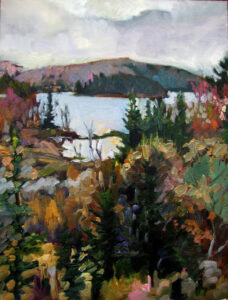
I’m a strong proponent of process. I don’t think you should be teaching or critiquing unless you can break your technique into discrete steps. As much as I strive to be objective, however, painting is ultimately communication, and that’s one of the great mysteries of human life.
Done well, painting slips the bonds of mere technique and enters another realm altogether. On Friday, when I’m jurying this show, I’ll be focusing on the technical side of painting, but I pray that I’m never so earthbound that I fail to see what’s transcendent.

